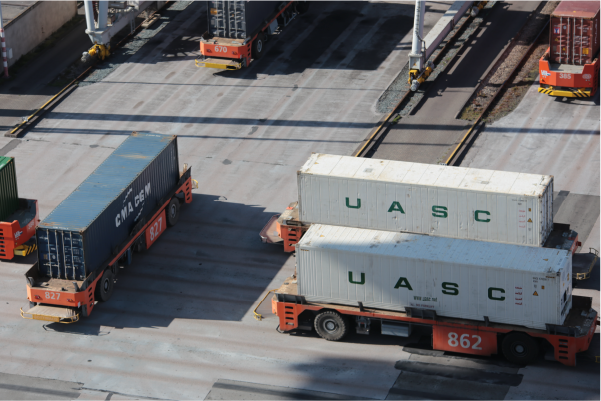If a shipment is valued at 100.000$ or more, it is considered a high value. High-value shipments often carry high risks and require special attention and logistics. Experts advise that one must research the process of high-value shipments beforehand and learn about different aspects of insurance coverage and liability or modern methods and technology used to prevent thieves from getting their hands on the precious high-value loads. For that reason we wrote this article on the Transport Of High-Value / High-Risk Loads: Security and Protection to shine some light on this interesting topic.
Insurance coverage
With high-value shipments, it is important to understand the difference between declared value, cargo liability insurance, and cargo insurance.
Declared value is the cost of a shipped item as stated by its shipper. Declared value is an option when calculating freight charges. It is used for limiting the carrier’s liability for delay, loss, or damages. Usually, declared value reflects the shipment’s cost to the business and is generally less than the customs declared value. When you are shipping a package, you will get declared value coverage. Declared value coverage is not insurance, but it does raise the financial liability of the carrier.
Cargo liability insurance is an insurance policy that protects a carrier in the business of transporting goods, as evidenced by a contract of carriage, against liability for loss or damage to the goods of their customers.
All-risk cargo insurance is the broadest and most comprehensive form of cargo coverage. It covers the full value of goods while in transit from origin to destination. Unlike legal liability or declared value, coverage is not dependent on where or how the goods were damaged, only that the loss occurred in transit.

Security and Protection
One of the strategies transportation companies use to secure high-value shipments is hiding the true value of the cargo using generic terms of code. This is not always easy because information sometimes leaks and attracts unwanted attention. When it’s not possible to keep the sensitive information about the valuable shipment from getting out, shipping companies employ different strategies to protect the cargo. Some of which include box trailers, dedicated trucks, anti-slash curtains, and having fixed parking instructions.
According to SensiGuard’s Supply Chain Intelligence Center report, 44% of nearly 5,000 theft incidents in Europe, the Middle East, and Africa region in 2017 was the slashing of curtains on curtain-sided trailers, pilferage took second place at 31%, and hijacking third at 6%.
Visual monitoring is another great strategy shipping companies use. Following the shipment from the pick up to its final destination using some of the tools such as barcoding, RFID tags which allows users to automatically and uniquely identify and track inventory and assets and GPS trackers. Check out Grasshopper Trans’ High Value / High Risk Loads page.
EU technology-based cargo theft prevention kit
This is one of the examples of how technology and innovation are shaping the shipping industry. The department responsible for transport at the European Commission, DG Move, has developed a new security toolkit for the European Road Freight Transport Sector. It has been designed to help European truck drivers, haulage companies, and other road transport players to “address cargo theft, stowaway entry to trucks and terrorism on European roads”.
The toolkit proposes technology solutions for cargo theft prevention:
- Access control – electronic keys and multi-factor biometric driver authentication
- Locks & seals – automatic or slam-locks applications, remote locking capability, and electronic seals with remote reporting capability
- Alarms & detectors – panic alarm button, alarm of curtain/door opening, cargo compartment CO2 sensors for detecting stowaways
- Camera surveillance for trucks & trailers – rear-view and cargo compartment cameras, motion detection capability, powerful optical zoom, internet protocol, ultra-high-resolution, high frames per second, and infrared view
- Track & trace – vehicle and cargo unit trackers, geofencing capability, and remote vehicle immobilization capability
- Awareness & response – multi-channel telematics, mobile devices and apps for finding secure parking places, real-time and on-demand traffic information, smartphones or watches to alert the driver if a truck or trailer door is opened and vehicle-based mist generators to make it difficult for thieves to select high-value items on-board
- Data-driven driver selection – driver whitelists and advanced recruitment processes
“New technology provides security at a lower cost, boosts efficiency, and facilitates container tracking,” says Ron Greene, vice president, strategic global operations for FreightWatch. And shipping companies rely on theft prevention and recovery services such as FreightWatch, CargoNet, and LoJack for monitoring crime patterns which allow many high-value shippers to better allocate security resources according to risk.
Transport of High-Value / High-Risk Loads conclusion
Transport of High-Value / High-Risk Loads evolves with technological innovations, but sophisticated criminals continually adapt their tactics and evolve too. That’s why it is important to keep up with the innovations and new technologies and methods used in the shipping industry and research all the segments before shipping a high-value item. To find out more about the way we deal with our High-Value / High-Risk Loads, don’t hesitate to contact us.

